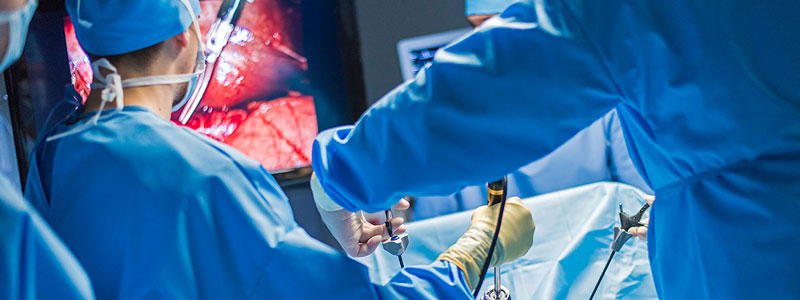
Laparoscopic Urological Surgery
Many traditional urologic surgical procedures require large incisions with lengthy hospitalization and recovery. Minimally invasive surgery, also often known as laparoscopic or keyhole surgery to patients, has recently been developed in the field of urologic surgery with the advancement of engineering and computer technologies. Using a small telescope with built-in magnification mechanism and a variety of long, thin surgical instruments placed through approximately 3-5 incisions (each of which is usually no larger than a dime in size), the surgeon is able to perform minimally invasive surgery for a variety of urologic diseases and problems. Patients who have undergone these procedures have enjoyed not only the same diagnostic and therapeutic benefits of traditional open surgery but also greatly reduced postoperative pain, shorter hospitalization, faster recovery, and better cosmetic results.
Minimally invasive surgery has been applied to a multitude of benign (non-cancerous) and malignant (oncologic or cancerous) urologic problems. Furthermore, it has been applied to conditions affecting a variety of urologic organs (including kidney, adrenal gland, ureter, bladder, prostate, lymph nodes).
Recently, robotic technology (Da Vinci Surgical System by Intuitive Surgical) has been used in the field of laparoscopic urologic surgery. Radical prostatectomy for prostate cancer is an area with increasing widespread use of such robotic technology. When robotics are involved, such procedure is often called “robotic-assisted laparoscopic radical prostatectomy” or “Da Vinci radical prostatectomy.” Robotic surgery has been reported to provide better visualization and greater dexterity to the surgeon, and the clinical data to date appear to be promising and similar to those of the established conventional open surgery.
Minimally invasive surgery may not be an appropriate option to every patient. At our clinic individualized evaluation and consultation is provided to all patients interested in this surgical modality.